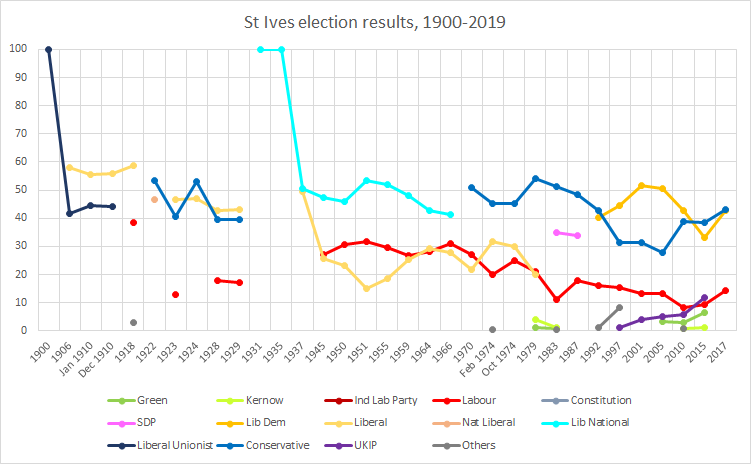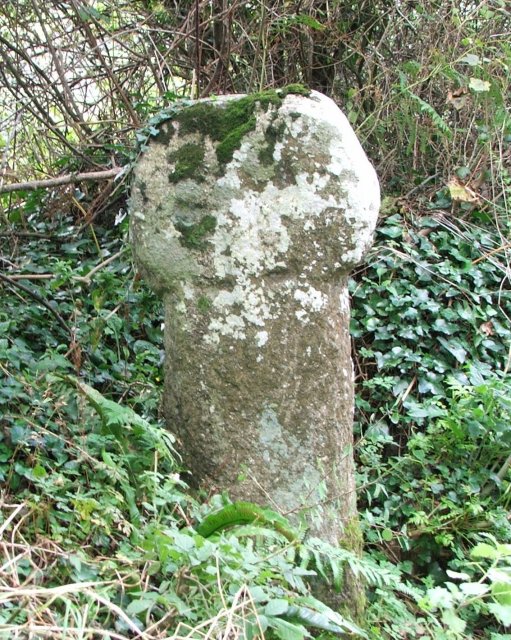|
Mulfra
Mulfra is a hamlet in the parish of Madron, Cornwall, England and is on the southern slope of Mulfra Hill. Nearby is the Scheduled monument, Mulfra Quoit, which is a portal dolmen, i.e. a ceremonial and funerary monument dating from the early or middle Neolithic period The Neolithic period, or New Stone Age, is an Old World archaeological period and the final division of the Stone Age. It saw the Neolithic Revolution, a wide-ranging set of developments that appear to have arisen independently in several parts ..., probably in use from 3500 to 2600 BC. References Hamlets in Cornwall Penwith {{Penwith-geo-stub ... [...More Info...] [...Related Items...] OR: [Wikipedia] [Google] [Baidu] |
Mulfra Quoit
Mulfra Quoit () is a Neolithic dolmen in the county of Cornwall in England. It stands on Mulfra Hill to the north of the hamlet of Mulfra. Location The Quoit is located west of Penzance between Porthmeor and New Mill on the top of Mulfra Hill, from where you can look to the sea over the surrounding hills. Structure Mulfra Quoit is similar to Chûn Quoit five kilometers away. The quoit has three 1.7m-high support stones, arranged in a U-shape 3.0m long and 1.7m wide, and open on one side. The capstone, which has slipped down, measures 3.2m by 3.0m, and is almost square; it has a weight of 5 tonnes. Since some of the stones that formed the chamber are missing, it is difficult to get an idea of its original form, but it is possible that four pillars supported the capstone slab as with Chûn Quoit. On the other hand, the capstone has a central bulge on its underside, which would give the stone a stable position on the existing three pillars. Mulfra Quoit was apparently covered by a ... [...More Info...] [...Related Items...] OR: [Wikipedia] [Google] [Baidu] |
Cornwall Council
Cornwall Council ( kw, Konsel Kernow) is the unitary authority for Cornwall in the United Kingdom, not including the Isles of Scilly, which has its own unitary council. The council, and its predecessor Cornwall County Council, has a tradition of large groups of independent councillors, having been controlled by independents in the 1970s and 1980s. Since the 2021 elections, it has been under the control of the Conservative Party. Cornwall Council provides a wide range of services to the approximately half a million people who live in Cornwall. In 2014 it had an annual budget of more than £1 billion and was the biggest employer in Cornwall with a staff of 12,429 salaried workers. It is responsible for services including: schools, social services, rubbish collection, roads, planning and more. History Establishment of the unitary authority On 5 December 2007, the Government confirmed that Cornwall was one of five councils that would move to unitary status. This was enacted b ... [...More Info...] [...Related Items...] OR: [Wikipedia] [Google] [Baidu] |
Cornwall
Cornwall (; kw, Kernow ) is a historic county and ceremonial county in South West England. It is recognised as one of the Celtic nations, and is the homeland of the Cornish people. Cornwall is bordered to the north and west by the Atlantic Ocean, to the south by the English Channel, and to the east by the county of Devon, with the River Tamar forming the border between them. Cornwall forms the westernmost part of the South West Peninsula of the island of Great Britain. The southwesternmost point is Land's End and the southernmost Lizard Point. Cornwall has a population of and an area of . The county has been administered since 2009 by the unitary authority, Cornwall Council. The ceremonial county of Cornwall also includes the Isles of Scilly, which are administered separately. The administrative centre of Cornwall is Truro, its only city. Cornwall was formerly a Brythonic kingdom and subsequently a royal duchy. It is the cultural and ethnic origin of the Cor ... [...More Info...] [...Related Items...] OR: [Wikipedia] [Google] [Baidu] |
St Ives (UK Parliament Constituency)
St Ives is a parliamentary constituency covering the western end of Cornwall and the Isles of Scilly. The constituency has been represented in the House of Commons of the UK Parliament since 2015 by Derek Thomas, a Conservative MP. The area's voters produced the 22nd closest result in the 2017 general election; a winning margin of 312 votes. Since 1992, the same locally leading two parties' candidates who were fielded (varying at different times) have won at least 27.2% of the vote each; the third placed candidate, that of the Labour Party, has fluctuated between 8.2% and 15.2% of share of the vote. Constituency profile The seat covers the southern end of Cornwall and the Isles of Scilly. Tourism is a significant sector in this former mining area. History St Ives has elected MPs to every Parliament since 1558, except for a brief period during the Protectorate. It was originally a mere parliamentary borough that returned two MPs until the Great Reform Act of 1832, when its r ... [...More Info...] [...Related Items...] OR: [Wikipedia] [Google] [Baidu] |
Hamlet (place)
A hamlet is a human settlement that is smaller than a town or village. Its size relative to a parish can depend on the administration and region. A hamlet may be considered to be a smaller settlement or subdivision or satellite entity to a larger settlement. The word and concept of a hamlet has roots in the Anglo-Norman settlement of England, where the old French ' came to apply to small human settlements. Etymology The word comes from Anglo-Norman ', corresponding to Old French ', the diminutive of Old French ' meaning a little village. This, in turn, is a diminutive of Old French ', possibly borrowed from ( West Germanic) Franconian languages. Compare with modern French ', Dutch ', Frisian ', German ', Old English ' and Modern English ''home''. By country Afghanistan In Afghanistan, the counterpart of the hamlet is the qala ( Dari: قلعه, Pashto: کلي) meaning "fort" or "hamlet". The Afghan ''qala'' is a fortified group of houses, generally with its ... [...More Info...] [...Related Items...] OR: [Wikipedia] [Google] [Baidu] |
Madron
Madron ( kw, Eglos Madern) is a civil parish and village in west Cornwall, Great Britain. Madron is named after Saint Madern's Church. Its annual Trafalgar Service commemorating the death of Vice Admiral Horatio Nelson was started on 27 October 1946, following a local tradition that his death was first announced on British soil in the Union Hotel, Penzance. Geography It is a large rural parish on the Penwith peninsula north of Penzance, bounded by the parishes of Sancreed and St Just to the west, by Zennor and Morvah to the north, by the sea and the parish of Paul in the south and by the parishes of Gulval and Penzance to the east. Madron village is centred on an elevated site approximately two miles (3 km) northwest of Penzance town centre. The main villages and hamets are Tredinnick, Lower Ninnes, New Mill, Newbridge and Tregavarah. The population was 1,466 at the 2001 census, rising to 1,591 at the 2011 census. The parish church is in the churchtown and is de ... [...More Info...] [...Related Items...] OR: [Wikipedia] [Google] [Baidu] |
Scheduled Monument
In the United Kingdom, a scheduled monument is a nationally important archaeological site or historic building, given protection against unauthorised change. The various pieces of legislation that legally protect heritage assets from damage and destruction are grouped under the term "designation." The protection provided to scheduled monuments is given under the Ancient Monuments and Archaeological Areas Act 1979, which is a different law from that used for listed buildings (which fall within the town and country planning system). A heritage asset is a part of the historic environment that is valued because of its historic, archaeological, architectural or artistic interest. Only some of these are judged to be important enough to have extra legal protection through designation. There are about 20,000 scheduled monuments in England representing about 37,000 heritage assets. Of the tens of thousands of scheduled monuments in the UK, most are inconspicuous archaeological sites, but ... [...More Info...] [...Related Items...] OR: [Wikipedia] [Google] [Baidu] |
Dolmen
A dolmen () or portal tomb is a type of single-chamber megalithic tomb, usually consisting of two or more upright megaliths supporting a large flat horizontal capstone or "table". Most date from the early Neolithic (40003000 BCE) and were sometimes covered with earth or smaller stones to form a tumulus (burial mound). Small pad-stones may be wedged between the cap and supporting stones to achieve a level appearance.Murphy (1997), 43 In many instances, the covering has eroded away, leaving only the stone "skeleton". The Korean Peninsula is home to the world's highest concentration of dolmens,UNESCO World Heritage List. "Gochang, Hwasun and Ganghwa Dolmen Sites." https://whc.unesco.org/en/list/977 including "cemeteries" consisting of 30–100 examples located in close proximity to each other; with over 35,000 dolmens, Korea alone (for unknown reasons) accounts for approximately 40% of the global total. History It remains unclear when, why and by whom the earliest dolmens wer ... [...More Info...] [...Related Items...] OR: [Wikipedia] [Google] [Baidu] |
Neolithic Europe
The European Neolithic is the period when Neolithic (New Stone Age) technology was present in Europe, roughly between 7000 BCE (the approximate time of the first farming societies in Greece) and c.2000–1700 BCE (the beginning of the Bronze Age in Scandinavia). The Neolithic overlaps the Mesolithic and Bronze Age periods in Europe as cultural changes moved from the southeast to northwest at about 1 km/year – this is called the Neolithic Expansion. The duration of the Neolithic varies from place to place, its end marked by the introduction of bronze tools: in southeast Europe it is approximately 4,000 years (i.e. 7000 BCE–3000 BCE) while in parts of Northwest Europe it is just under 3,000 years (c. 4500 BCE–1700 BCE). In parts of Europe, notably the Balkans, the period after c. 5000 BC is known as the Chalcolithic (Copper Age), due to the invention of copper smelting and the prevalence of copper tools, weapons and other artefacts. The spread of the Neolithic from the ... [...More Info...] [...Related Items...] OR: [Wikipedia] [Google] [Baidu] |
Hamlets In Cornwall
A hamlet is a human settlement that is smaller than a town or village. Its size relative to a parish can depend on the administration and region. A hamlet may be considered to be a smaller settlement or subdivision or satellite entity to a larger settlement. The word and concept of a hamlet has roots in the Anglo-Norman settlement of England, where the old French ' came to apply to small human settlements. Etymology The word comes from Anglo-Norman ', corresponding to Old French ', the diminutive of Old French ' meaning a little village. This, in turn, is a diminutive of Old French ', possibly borrowed from (West Germanic) Franconian languages. Compare with modern French ', Dutch ', Frisian ', German ', Old English ' and Modern English ''home''. By country Afghanistan In Afghanistan, the counterpart of the hamlet is the qala (Dari: قلعه, Pashto: کلي) meaning "fort" or "hamlet". The Afghan ''qala'' is a fortified group of houses, generally with its own co ... [...More Info...] [...Related Items...] OR: [Wikipedia] [Google] [Baidu] |






